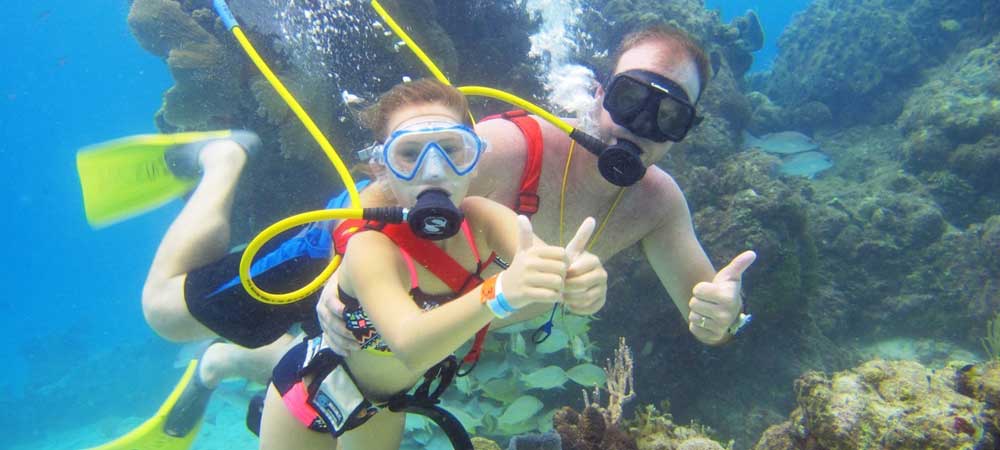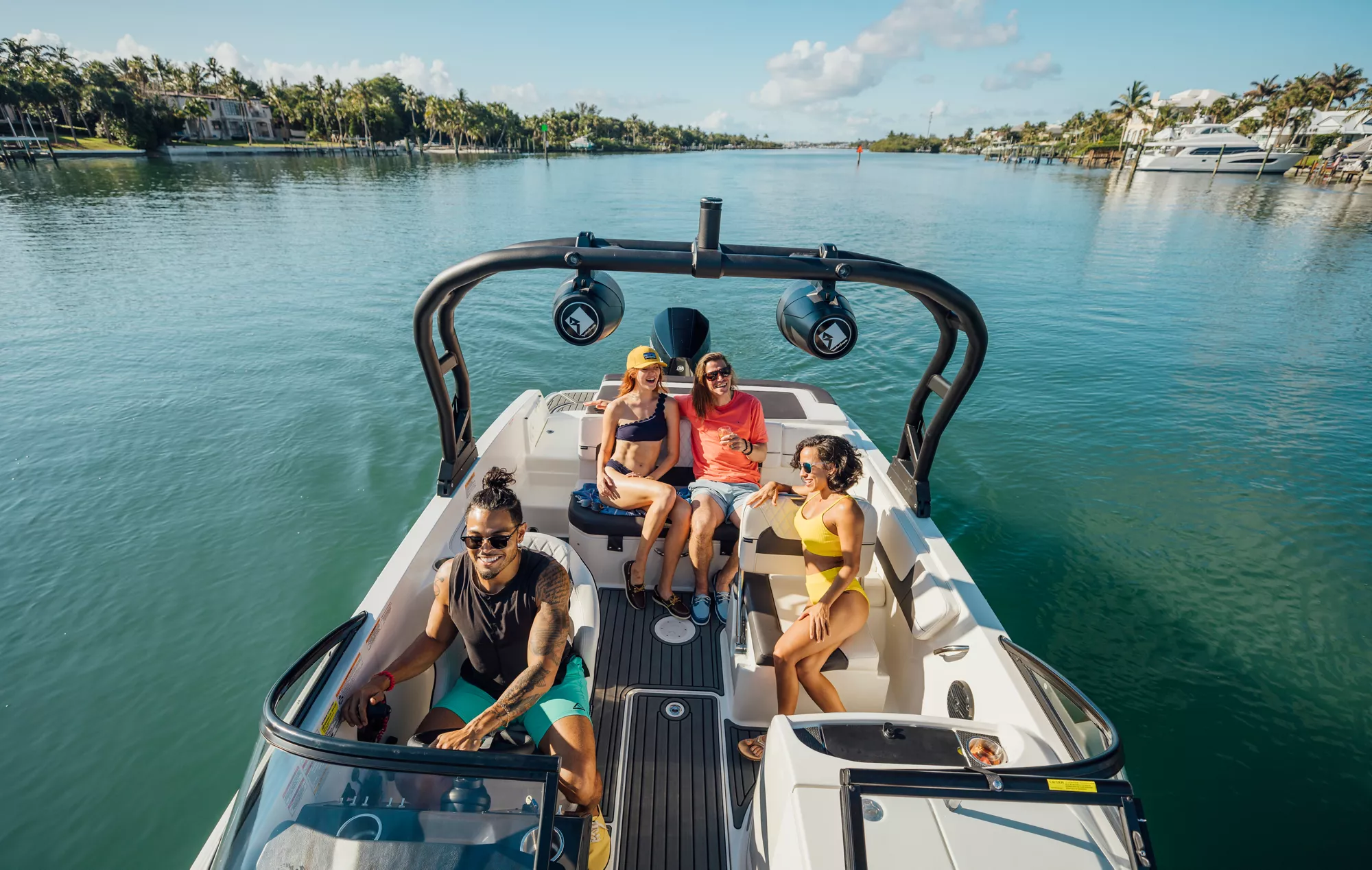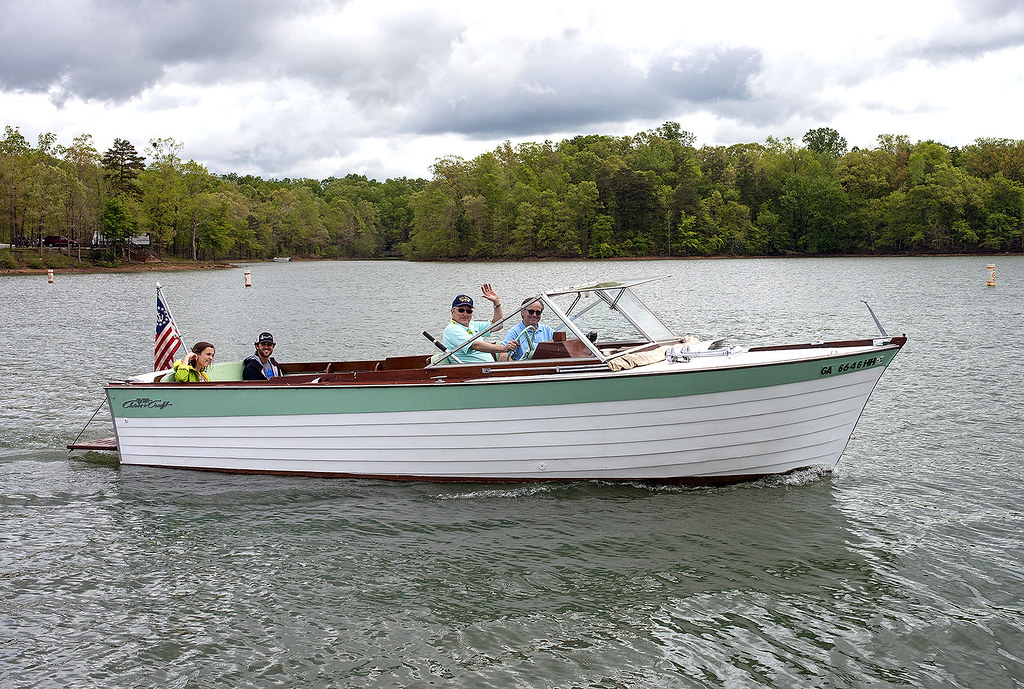How Deep Can a Submarine Go: Exploring the Depths and Limitations
The depths to which a submarine can submerge is a fascinating topic, as it involves exploring the limits of human engineering under extreme underwater conditions.
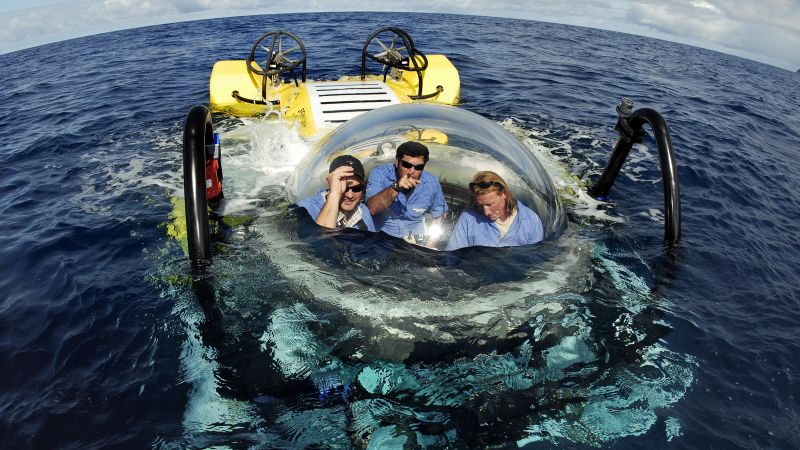
Submarines are designed to go as deep as possible, balancing between the pressure exerted by the water and the structural integrity of the vessel itself.
Various factors, such as the type of submarine and its purpose, play a significant role in determining its maximum depth.
To better comprehend the maximum depths that submarines can reach, it is crucial to understand the science of submergence.
As a submarine dives deeper, the surrounding water pressure increases, causing stress on the vessel's structure. Therefore, submarines must be built with resilient materials and advanced technologies to withstand these pressures and maintain their optimal performance.

One of the most intriguing aspects of submarines is their different capabilities and types, ranging from military vessels designed for stealth missions to research submarines exploring the ocean depths.
Each type of submarine has specific operational depths and limitations, with some built for shallow waters and others for diving deep into the ocean's abyss.
Key Takeaways
- Submarines face increasing pressures at greater depths, requiring advanced designs and materials to withstand them.
- Various types of submarines have specific operational depths and limitations, depending on their purpose.
- The maximum depth a submarine can reach is influenced by its structure and the technologies used in its construction.
The Science of Submergence
Understanding Pressure and Buoyancy
When submarines submerge, they face several challenges, including pressure and buoyancy.
A submarine's buoyancy is the force that keeps it afloat. However, when submerged, the increasing pressure from the surrounding water counteracts this buoyancy.
At greater depths, the pressure becomes higher, with every 10 meters (33 feet) of depth adding approximately one atmosphere of pressure.
Pressure can be experienced in different ways, such as hydrostatic pressure, which acts uniformly on an object submerged in fluid, and dynamic pressure, resulting from a fluid's motion.
As submarines go further underwater, the combination of these pressures becomes a significant factor in their design and functionality.

Submarine Hulls and Design
A submarine's hull is its primary defense against the immense pressures faced underwater.
Hulls are typically made from high-strength steel or titanium, materials chosen for their ability to withstand intense pressures without succumbing to deformation.
For example, the Ohio Class submarines have the capability to explore depths of up to 500 meters (1640 feet), owing to their robust hull design.
Modern submarines also employ advanced technologies and design features that aid in their submergence capabilities, such as:
- Pressure hulls: These are designed to withstand both the hydrostatic and dynamic pressures faced while submerged, ensuring the safety of the crew and the structural integrity of the submarine.
- Ballast tanks: Submarines use ballast tanks to control their buoyancy by adjusting the amount of water and air inside. When the tanks are filled with water, the submarine becomes heavier and sinks. To ascend, the water is replaced with air, making the submarine lighter and more buoyant.
- Control surfaces: These include diving planes, rudders, and other surfaces that help the submarine maneuver underwater, allowing it to maintain a specific depth or change its direction.
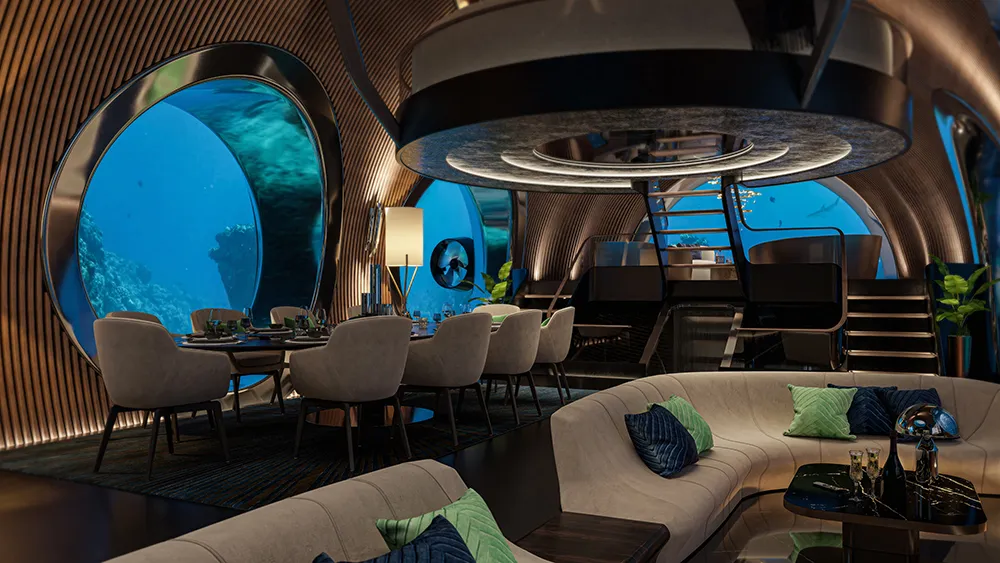
It is important to note that there is a limit to how deep a submarine can go.
Deep-diving crewed submersibles like the Deepsea Challenger have reached depths of 10,925 meters (35,843 feet), but this is an exception rather than the norm.
In general, the operational depth of military submarines is around 300 meters (984 feet), limited by the strength of their hull and the technologies used in their construction.
Submarine Types and Their Capabilities
Military Submarines
Military submarines are specialized vessels used by navies worldwide for various strategic and tactical purposes.
They are designed with stealth in mind, allowing them to approach enemy shores without detection or to carry out reconnaissance missions.
Different submarine classes have diverse diving depth capabilities.
Generally, military submarines can dive as deep as 1,500 meters. A prominent example is Russia's Akula-class submarine.
Nuclear-Powered Submarines
Nuclear-powered submarines utilize a nuclear reactor to generate power for propulsion and other systems.
These submarines can stay submerged for extended periods, limited only by their provisions.
Examples of nuclear-powered submarines include the Virginia-class, Seawolf-class, and Ohio-class submarines used by the United States Navy.
The Virginia-class submarines can reach depths of over 800 meters, while Seawolf-class submarines can reach even greater diving depths.
Attack Submarines and Ballistic Missile Submarines
- Attack Submarines: These submarines are primarily designed for seeking and destroying enemy submarines and surface ships in naval warfare. Some examples of attack submarines include the Virginia-class and Seawolf-class submarines. These vessels are equipped with torpedo tubes and can launch numerous types of torpedoes and missiles to engage their targets.
- Ballistic Missile Submarines: These specialized submarines carry long-range ballistic missiles equipped with nuclear warheads. Their primary mission is to provide a strategic nuclear deterrent. The Ohio-class submarines, used by the United States Navy, are an example of this type of vessel. They can carry up to 24 Trident II D5 ballistic missiles, each capable of carrying multiple nuclear warheads.
Research and Deep-Sea Exploration Submersibles
Deep-sea exploration and research submersibles are designed for scientific purposes, such as oceanographic studies and deep-sea geological surveys.
One well-known submersible is Alvin, which has been used for numerous deep-sea expeditions since its launch in 1964.
Another notable example is the Bathyscaphe Trieste, which reached the deepest part of the ocean – the Challenger Deep – in 1960.
Research and deep-sea exploration submersibles, like the Deepsea Challenger, can reach impressive depths of up to 10,925 meters (35,843 feet).
It should be noted that these vessels typically have lower depth capacities compared to military submarines. Most research submersibles can submerge up to 600 meters (1,968 feet).
Operational Depths and Limitations
Test Depth and Safe Operating Depth
The safe operating depth for submarines, also known as test depth, is the maximum depth at which a submarine can operate under normal peacetime circumstances.
Test depth is a vital metric for submarine design and operation, as it gives submarine crews the necessary guidance to navigate safely underwater.
For instance, US Navy submarines set their test depth at two-thirds (0.66) of the design depth, whereas the Royal Navy uses a 4/7 (0.57) ratio of the design depth, and the German Navy uses half (0.5).
Crush Depth and Collapse Depth
Crush depth refers to the point at which a submarine's hull will collapse due to extreme water pressure. At this depth, the submarine becomes unsafe and inoperative.
Crush depth is a crucial consideration in submarine design, as it determines the maximum depth a submarine can withstand before sustaining irreversible damage.
The deepest depth a submarine has gone is 10,925 meters (35,843 feet) by the Deepsea Challenger in 2012. However, this was a manned submersible, not a military submarine.
Depth Ratings for Various Submarine Classes
Different submarine classes have varying depth ratings, depending on their design and capabilities.
For example, the Ohio Class submarines, which are nuclear-powered and operated by the United States Navy, can explore depths of up to 500 meters (1640 feet), although their operational depth is 300 meters (984 feet).
The Virginia Class submarines can operate at depths greater than 250 meters (820 feet), whereas the Los Angeles Class submarines have a maximum operating depth of around 290 meters (950 feet).
Notable Submarine Dives
Trieste's Historic Mariana Trench Dive
In 1960, the Trieste, a bathyscaphe designed by Swiss scientist Auguste Piccard, made a historic dive into the Mariana Trench, the deepest part of the Earth's oceans.
The Trieste, piloted by Jacques Piccard and Don Walsh, descended to a depth of 10,916 meters (35,814 feet) at the Challenger Deep.
This groundbreaking expedition demonstrated the feasibility of deep-sea exploration and marked the first time that humans had ventured so far beneath the ocean's surface.
Deep-Sea Explorations by Modern Submersibles
Recent advancements in underwater technology have allowed for even deeper dives into the abyss.
For example, in 2012, famed filmmaker James Cameron piloted the Deepsea Challenger to a depth of 10,925 meters (35,843 feet) within the Mariana Trench.
Not all submersible dives, however, are exploratory in nature.
The world's militaries also utilize submarines capable of diving to great depths.
Military submarines, such as Russia's Akula-class submarines, can descend up to 1500 meters underwater.
These vessels are equipped with advanced technology and are vital assets in naval operations.
The following table provides an overview of some notable submarine dives:
| Submersible | Year | Depth (meters) | Dive Location | Pilot/Participants |
|---|---|---|---|---|
| Trieste | 1960 | 10,916 | Mariana Trench (Challenger Deep) | Jacques Piccard, Don Walsh |
| Deepsea Challenger | 2012 | 10,925 | Mariana Trench | James Cameron |
| Akula-class | N/A | up to 1,500 | Various | Russian Navy |
These record-breaking dives showcase the incredible potential for deep-sea exploration and illustrate the human capacity for pushing the boundaries of underwater technology.
Technologies and Features of Modern Submarines
Propulsion and Stealth Capabilities
Modern submarines have advanced propulsion systems that enable them to dive deeper and travel faster while remaining as quiet as possible.
Engineers have designed advanced nuclear reactors to power these submarines, allowing them to remain submerged for extended periods without the need for refueling.
This also means they can operate more efficiently than conventional diesel-electric submarines, which must surface periodically to recharge their batteries.
Stealth is a crucial aspect of submarine technology, and innovations in hull design and material choices have made it more difficult for enemy vessels to detect these submarines.
For example, anechoic tiles cover the outer hull of a submarine, which absorb sound waves and minimize the vessel's noise signature.
This combination of advanced propulsion and stealth capabilities ensures that modern submarines can operate in a covert manner, making them an essential asset for naval operations worldwide.
Sonar and Communication Systems
One of the most critical systems in a submarine is its sonar, which allows the crew to detect, track, and communicate underwater.
Advanced sonar systems provide enhanced capabilities such as long-range detection and high-resolution imaging, enabling better navigation and intelligence gathering.
Additionally, modern submarines are equipped with cutting-edge communication systems that ensure secure transmission of data and information while submerged.
To maintain stealth, submarines utilize low-frequency radio waves and specialized antennas for communication.
These systems enable the crew to stay connected with command centers and other naval assets, even while operating at great depths or in challenging environments.
Weapon Systems and Payloads
Modern submarines are equipped with a variety of weapon systems, including torpedoes, cruise missiles, and anti-ship missiles.
These submarines have a significant payload capacity, allowing them to carry an array of weapons for a diverse set of missions.
One notable weapon system is the Tomahawk cruise missile, which can be launched from both vertical and horizontal tubes onboard the submarine.
This missile is capable of accurately striking targets at long ranges, making it a formidable asset in military operations.
Furthermore, modern submarines can be equipped with advanced sensors for gathering intelligence, recon, and surveillance data, further expanding their capabilities in naval warfare.
Survival and Endurance Underwater
Oxygen and Life Support Systems
Submarines are specifically designed to survive and function underwater for extended periods.
One of the primary concerns while operating a submarine is the supply of oxygen for the crew.
Modern submarines are equipped with advanced oxygen generation systems that separate oxygen from seawater to maintain the breathable atmosphere[^1^].
Additionally, they employ scrubbers to remove carbon dioxide and other contaminants from the air, ensuring that the crew can breathe comfortably during long dives[^2^].
Endurance underwater depends not only on maintaining a breathable atmosphere but also on the submarine's ability to generate power and store supplies.
Most military submarines have nuclear-powered engines, which provide a virtually limitless source of energy.
This allows them to remain submerged for long periods, limited primarily by the need to replenish food and other supplies[^4^].
Underwater Speed and Maneuverability
Underwater speed and maneuverability are essential factors affecting a submarine's ability to accomplish its mission, either for exploration or for submarine warfare.
Different types of submarines have different speed capabilities, with some being capable of reaching speeds of up to 40 knots[^5^].
Maneuverability is equally important, as it enables submarines to evade threats and navigate through challenging underwater terrain.
Submarines are built with advanced propulsion systems and control surfaces[^6^] that allow for precise movements even in the most difficult conditions.
They employ sonar systems to detect obstacles and other vessels, helping them navigate while submerged and execute successful submarine dives[^7^].
Risks and Accidents
The Impact of Water Pressure on Submarines
Submarines have to withstand the immense hydrostatic pressure of the deep ocean.
With increasing depth, the water pressure increases, and this can pose significant challenges for submarines.
The pressure of the deep increases by about one atmosphere for every 10 meters of depth, meaning that a submarine at a depth of 300 meters or about 1,000 feet experiences a pressure 30 times higher than at the surface 1.
Modern submarines are designed to cope with this pressure and are built to withstand a certain maximum depth, also known as crush depth1.
However, if a submarine goes beyond its crush depth, the pressure may cause the hull to implode, leading to catastrophic damage and the loss of the vessel.
Historical Submarine Accidents
Several submarine accidents have occurred throughout history due to various factors, including water pressure, mechanical failure, and human error.
A key example is the sinking of the USS Thresher2 during the Cold War.
The vessel suffered a malfunction in its nuclear propulsion system, which ultimately led to its doom.
Unable to resurface, the Thresher exceeded its crush depth and imploded under the immense pressure, causing the loss of all 129 crew members2.
During World War II and the Cold War, countless other submarines were lost due to accidents, sabotage, and misjudgment of depth. Below is a brief table summarizing a few of these historical accidents:
| Submarine | Year | Cause |
|---|---|---|
| HMS Thetis | 1939 | Flooding and capsize |
| USS Squalus | 1939 | Flooding due to valve malfunction |
| K-129 (Soviet) | 1968 | Unknown; believed to be an explosion or flooding |
| USS Scorpion | 1968 | Unknown; believed to be a torpedo malfunction or battery explosion |
Footnotes
Impact on National Defense and Warfare
Submarines in Military History
Submarines have played a vital role in naval warfare since their introduction in the early 20th century.
During World War I, German U-boats demonstrated their effectiveness in sinking enemy ships and disrupting supply lines, making them a formidable force in the conflict.
World War II saw an even greater reliance on submarines as navies from different nations continued to develop more advanced submersible vessels.
Notably, the use of the Japanese Imperial Navy's submarines demonstrated the strategic importance of these silent, underwater predators in the Pacific theater.
In the Cold War era, nuclear-powered submarines became a significant component of national defense strategies.
They not only served as an effective tool for executing covert missions but also enabled the delivery of nuclear weapons, thereby becoming a critical part of the deterrence policy.
For instance, the U.S. Ohio-class submarines can dive up to 300 meters, enabling them to remain hidden and undetected, ensuring the retaliatory capability of the ballistic missile submarines.
Submarine Contributions to National Defense
Today, military submarines play an indispensable role in maintaining the balance of power and securing national interests around the world.
They provide a strong deterrent to potential adversaries by patrolling strategic locations and monitoring their activities.
In addition, submarines can gather crucial intelligence, deploy covert operations, and execute swift and devastating attacks on enemy targets if necessary.
Submarines are equipped with various weapons systems including:
- Torpedoes: Used for targeting enemy vessels, both on the surface and underwater.
- Cruise missiles: Capable of striking strategic land targets or surface ships from long ranges.
- Ballistic missiles: Designed to carry nuclear warheads, providing a deterrence capability and ensuring a nation's ability to retaliate in case of a nuclear attack.
Furthermore, recent advancements in technology have enabled the development of more advanced sensors, communication systems, and stealth capabilities.
For instance, Russia's Akula-class submarines are capable of diving as deep as 1,500 meters, allowing them to operate outside the detection range of most anti-submarine sensors.
The Future of Submarine Development
Advances in Submarine Engineering
As submarine technology continues to evolve, engineers are constantly working on innovative solutions to push the boundaries of submarine capabilities.
Some advancements include improvements in hull materials and design, such as leveraging advanced materials for increasing diving depth and adopting a more hydrodynamic design to minimize acoustic signatures.
Additionally, innovations in propulsion systems are being explored for efficient and stealthy operations.
For example, air-independent propulsion (AIP) systems provide submarines with the ability to operate without surfacing for extended periods, thereby increasing their underwater endurance.
Another area of focus is the use of alternative energy sources, like nuclear power or even renewable energy systems, to further enhance operational capability and reduce environmental impact.
Autonomous and Remotely Operated Submersibles
The development of unmanned underwater systems, such as autonomous underwater vehicles (AUVs) and remotely operated vehicles (ROVs), has seen significant growth in recent years.
These submersibles offer various advantages in naval and scientific operations, including reduced risk to human operators, increased efficiency, and the ability to carry out missions deemed too dangerous for manned vessels.
AUVs and ROVs are increasingly being designed for a range of missions, including:
- Surveillance and Reconnaissance: Unmanned systems can be deployed for long-term monitoring of strategic locations, collecting data on underwater conditions, and identifying potential threats.
- Mine Countermeasures: AUVs and ROVs can be programmed to search for, identify, and neutralize mines without risking manned vessels.
- Underwater Infrastructure Inspection and Maintenance: These submersibles can be utilized for assessing and repairing underwater pipelines, cables, and other structures.
- Marine Research and Exploration: Unmanned systems offer a cost-effective and safe method for scientists to study and interact with the deep ocean environment.
Frequently Asked Questions
What is the maximum operational depth of a military submarine?
Military submarines have varying maximum operational depths depending on their class and design.
Generally, these submarines can go more than 600 feet below the surface.
For example, the U.S Navy currently operates Los Angeles class, Ohio class, Seawolf class, and Virginia class submarines, each characterized by a different max dive depth [source].
At what depth does a submarine reach its crush depth?
A submarine's crush depth is the point at which the hull can no longer withstand the water pressure outside, leading to the vessel's collapse.
This depth depends on the submarine's design, materials, and construction.
It is vital for submarines to stay well above their crush depths to ensure the crew's safety and maintain the vessel's structural integrity.
What was the maximum depth achieved by a World War II submarine?
During World War II, submarines had more limited diving capabilities compared to modern variants.
They could reach depths of up to around 300 feet for attack missions or around 400 feet for emergency dives.
As technology advanced, submarines have been built to handle greater depths and pressure.
To what depths can modern nuclear submarines safely descend?
Modern nuclear submarines can safely dive to considerable depths, enabling them to remain hidden and avoid detection.
For instance, the Russian Navy's Akula class submarines have a safe operating depth of 450 meters (1,476 feet) but can dive to depths of up to 580 meters (1,804 feet) if required [source].
What are the physiological limits for humans underwater in a submarine?
The physiological limits of humans underwater are primarily determined by the pressure exerted on their bodies.
Inside a submarine, the pressure is controlled and maintained at close to surface level, ensuring the crew can safely function for extended periods in deep waters.
However, if a submarine experiences increased internal pressure or a breach, it can cause physiological effects on the crew, from mild discomfort to severe injury.
What are the consequences for a submarine exceeding its structural limits?
When a submarine exceeds its structural limits, particularly its crush depth, it is in danger of catastrophic failure.
The immense pressure exerted on the submarine at great depths can cause the hull to implode, leading to the vessel's destruction and the potential loss of all crew on board.
To prevent this, submarines are built with failsafe features and dive-depth limits to ensure they remain well within their safe operating range.
Charlie is Editor-in-Chief of Sea Magazine
